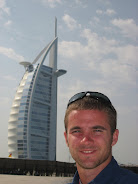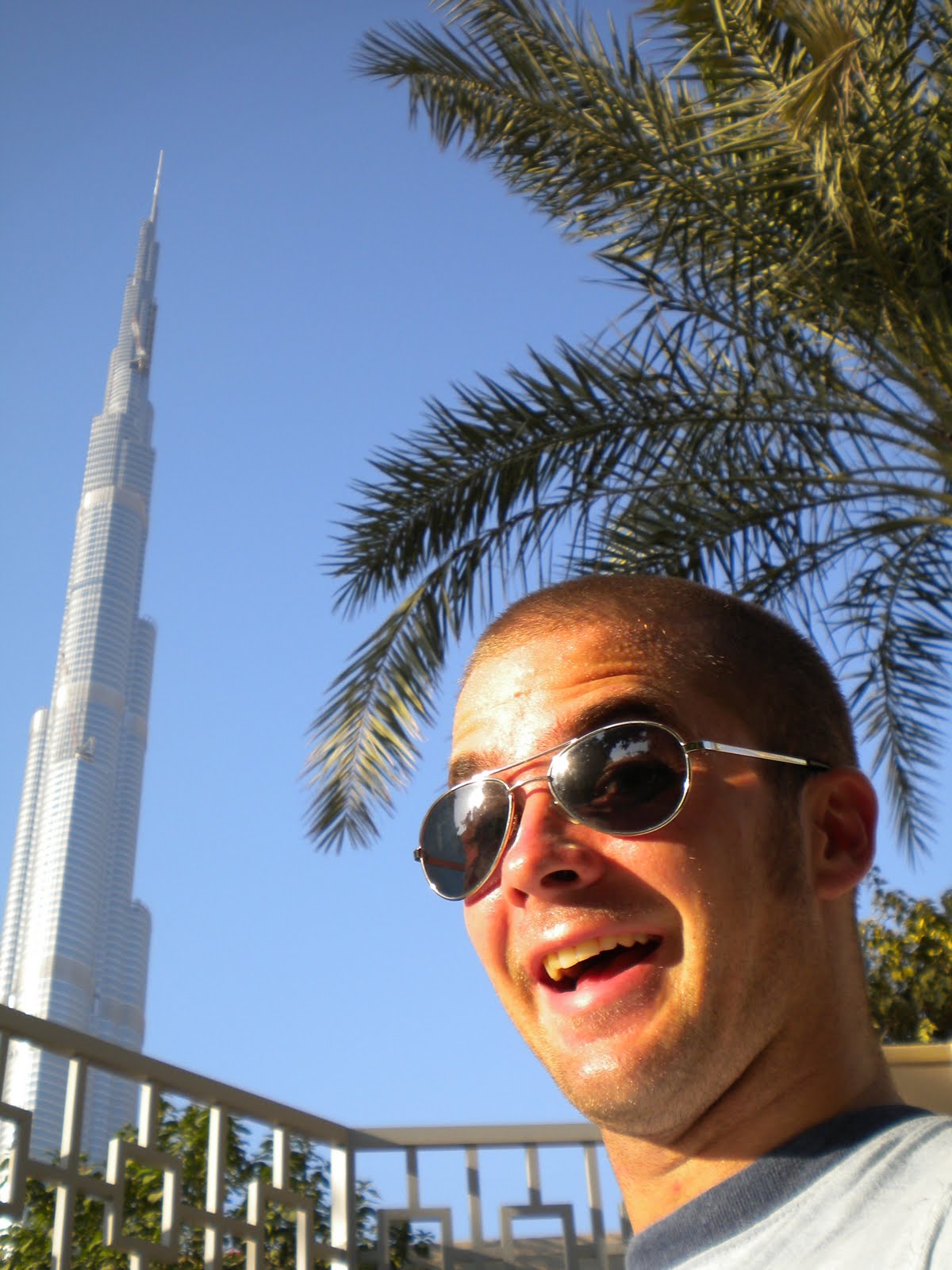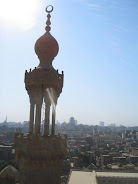I keep trying to search for an "authentic cultural experience" but keep wondering if such a thing really exists. The world is blending everything. You can order in McDonalds from anywhere in Cairo. But then you can also get "fuul" sandwiches on any block for less than a dime apiece. The large "khan al-khalili" the massive marketplace in Islamic Cairo, still sells spices and cloth for whatever price you can bargain, but at the same time you have motorcycles cruising through the narrow streets, and the nicest blankets have the discrete label "made in China" on them.
Such cultural blending comes out even in so-called "high culture." The last two weeks I've been to two concerts: the first an "oud" concert where a man played the guitar-esque instrument of that name backed by a 15-20 piece orchestra consisting of violins, guitars, cellos, synthesizers, drums, and flutes. The second was a Sufi dance. Yet in both cases they seemed to be targeted at foreigners. The first had a lot of upper-middle class Egyptians in attendance but the second had almost no Egyptians. It made me realize that the average Egyptian probably knows no more about the "oud" or the Sufi dance than the average American knows about classical violin or ballet. The only ones that know anything are the educated, and even those only go to such events on occasion.
Nevertheless, that being said, these were definitely unlike anything I had ever attended. The first was a weird mix of the classical and the modern, the popular and the elitist, the Egyptian and the foreign. The whole band was dressed to the nines, wearing suits and tuxedos. Many in the audience were as well, but my fears of being underdressed in slacks and a collar shirt were allayed when a group of teenager boys came in wearing sleeveless t-shirts. The instruments were half Egyptian, with the "oud" being the centerpiece, but amidst the drums and flutes were violins, cellos, and a synthesizer. In spite of the relatively formal nature of the concert, the silent reverence assumed at symphonies in the West was never present. People would talk and laugh during the song, get up and leave in the middle of a piece. The sound system was so loud you could hear anyway. Every now and then the crowd would spontaneously start singing the words to the song, even though nobody on stage was singing. Apparently they were playing instrumental versions of well known songs from Egyptian legends like Umm Kalthoum.
The second event was, in content, even more non-Western: no western instruments or dress styles. However, the crowd was almost 100% tourists from Europe and America. The Sufi dances are not necessarily Egyptian: Sufism is a school of thought (or multiple schools of thought) within Islam that tends to emphasize a more spiritual side of Islam and personal relationship with God. They are respected (or sometimes reviled, as in Saudi Arabia) for their closeness to God and are known for their dances. The term whirling dervish comes from the "darwiish" who spins as part of the dance.
Anyway, as I was wandering through the crowded market at Khan al-Khalili (itself a classic example of the blurred line between Egyptian and international), a man yells at me in English that he has good prices on his cloth. I reply in Arabic that I appreciate it but am not interested. He then asks if I would like to see a Sufi Dance. I was in automatic "no thanks" mode at that point, not even listening to what it was he was offering, but my friend Ibrahim was interested, so he replied yes. We were directed to a free Sufi concert in a hidden concert hall down one of the back alleys of the Khan.
Once in there, it was a sight to behold. A multiple piece "band" playing away on their drums, flutes, and other instruments for which I don't have a name. One man singing what I can only assume to be Quranic verses or other hymn-like praises into the microphone. Seven dancers in the front dancing in circles. Then out comes the "dar-wiish" who spins non-stop for about 15 minutes. Sometimes going slow, sometimes fast. He is wearing a colorful outfit with 3 "skirts" that flare out as he spins, creating a kind of saucer. Midway through the first piece he unhitches one of the skirts and raises it over his head; it is now simply a large doughnut shaped cloth that he spins, sometimes with one hand, sometimes with two. The thing is massive. It is amazing that he is spinning himself but spinning the cloth at an entirely different speed, yet all in rhythm to the drummers and flutes who sometimes speed up, sometimes slow down. After a while he, still spinning, folds up the circular cloth and hands it to one of the other dancers who discretely disposes of it to a backstage hand. During the second song this is repeated with the next "skirt," which is removed over his head as he whirls it.
Following this act the finale was a triple set of "whirling dervishes" who all spun in sync but would do the same dance, spinning ceaselessly for probably 15 minutes with no sign of dizziness or fatigue. The central on of the three was the only one out of the entire group, including the instrumentalists, who was not wearing a distinctive white scarf on his head that is emblematic of one who is "taSowwuf" (Sufi). He had long stringy curly hair that would flap into his face every time he spun. Almost the entire time he had this silly grin on his face that seemed to come not as a sign directed at the audience that he was entertaining them, but a grin that seemed to come from the fact that he had no idea anyone was watching him, but was simply having an intensely pleasureable experience.
However, the strangest part of all this was that there were very few Egyptians present. The hall was full of people who were obviously tourists. How bizarre, I thought. All of these people must be going home and telling stories about how they went and saw a "real" Sufi dance, but at the same time, the whole thing was set up as entertainment for visitors. I kept expecting them to have an "exit fee," since there was no charge for admission. There had to be some catch.
Perhaps I was simply skeptical because less than an hour before my friend and I had gotten herded into a different tourist trap where they served us each a can of Sprite that cost 10 LE. That amounts to $1.80 for a can of Sprite, a price you only see at expensive restaurants and out of the way resorts. I couldn't believe it; it was 5 times more than I'd ever paid for such a product in Egypt and 10 times more than what I usually paid. I was furious, but they brought out the menu and sure enough, that was the price.
Such a trap was not waiting for me at the end of the Sufi dance, but as I walked out, still in awe of how those dancers could spin those heavy cloth skirts, and spin themselves, and not die of dizziness, I was left wondering: is there such a thing as "authentic culture" anymore?
9 years ago







1 comment:
McDonalds Schmcdonalds!
DOES CAIRO HAVE A WENDY'S???
Post a Comment